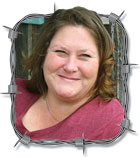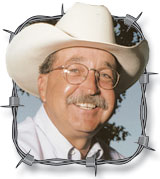
In this issue of Ozarks Farm & Neighbor, you’ll see it’s all about the ladies. I guess you could say it’s an issue about farm girl/woman power.
Statists show since 1970, the number of female-lead farms has more than tripled, making female farmers and ranchers the largest minority in the industry. Women have always been on the farm, running it or working side-by-side with their male counterparts, but it has only been in the last 50 years they have received recognition for their tireless efforts and success in the world of agriculture.
If you look back in time, there are countless women who made their mark in agriculture, and continue to influence the industry today.
For example, Eliza Pinckney was only 16 years old when she managed three plantations in South Carolina. She wanted to reduce her family’s debt and attempted to grow alfalfa, ginger and other experimental crops at the time. The crops failed. However, in 1793, she planted the first indigo plant in North America. In case you don’t know, the indigo plant was used to dye fabric, giving denim its blue color. She learned to grow, cultivate and export indigo. Historical accounts, state that by 1775, South Carolia was exporting more than a million pounds of indigo each year, which would equal more than $30 million today.
Harriet Williams Russell Strong fought for eight years to gain control of her husband’s land after he died the late 1800s. Once the mother of four daughters won in court, she began to develop and manage the anchito del Fuerte estate in San Gabriel Valley, Calif., which was filled with walnut and orange trees, and pampas grass. She pioneered new methods in water conservation and dry land irrigation to supply her crops. Her plan paid off as she became the leading commercial grower of walnuts in the U.S. Her legacy includes being an advocate for water conservation, irrigation, women’s rights and education, as well being as an inventor, agricultural pioneer, civic leader and philanthropist. She also formed a water company, making herself president and two of her daughters officers in the company, which they sold for a hefty profit.
Dr. Mary Engle Pennington was denied her bachelor’s degree in 1892 because of her gender. She received only a certificate of proficiency in chemistry, but went on to earn her PhD in the field in 1895. She founded the Philadelphia Clinical Laboratory in 1898, joined the U.S. Department of Agriculture in 1905 and became the chief of its Food Research Lab in 1908. She did bacteriological analyses for subscribing doctors and developed milk and dairy standards, including checklist procedures for dairy herds that were adopted throughout the United States. She traveled the nation investigating the efficiency of refrigerator cars and recommended standards for construction and insulation to reduce bacteria counts in refrigerated and frozen foods. She was the first woman to be inducted into the Poultry Historical Society Hall of Fame.
Pinckney, Strong and Pennington are just three of the women who crumpled barriers and blazed a trail for today’s female agriculturalists. These three are among the women had to fight to own land, fight for their education, and fight for their spot in what was considered a “man’s world.” a world that did not even allow women the right to vote until 1920.
Women have finally come into their own on the farm over the last five or six decades, and it’s up to us to ensure we are not forgotten in history. We have to make our mothers and grandmothers proud, and serve as role models for the upcoming generations. Eliza, Harriet and Mary are counting on us.
Julie Turner-Crawford is a native of Dallas County, Mo., where she grew up on her family’s farm. She is a graduate of Missouri State University. To contact Julie, call 1-866-532-1960 or by email at [email protected].






